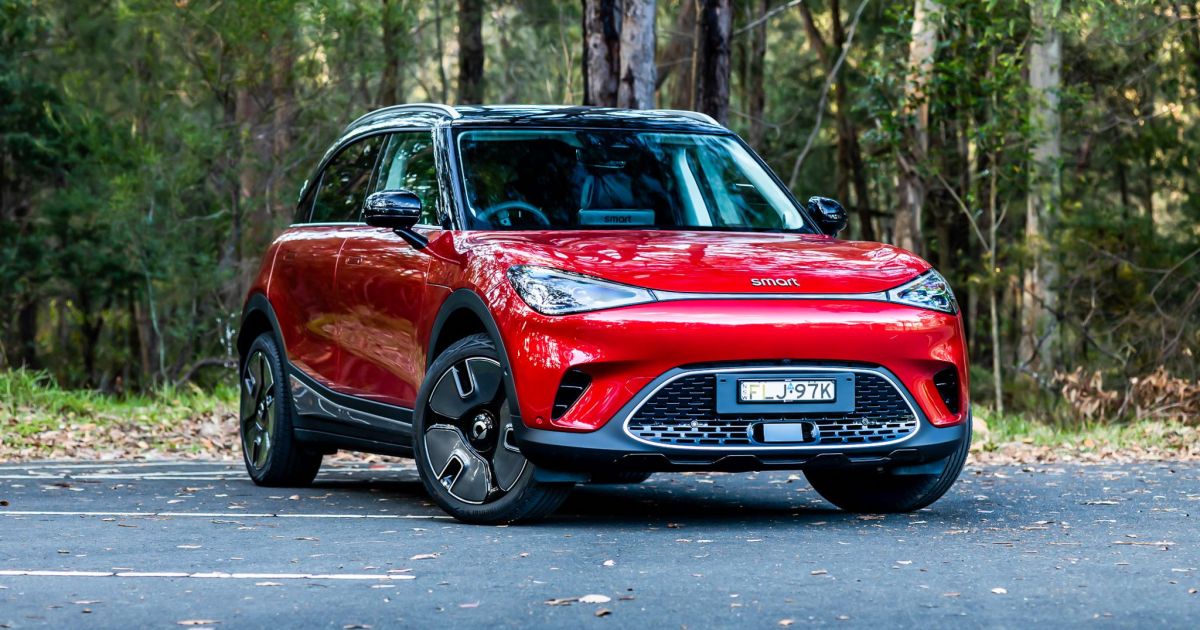Smart has made its return to Australian shores, introducing new technologies in its lineup of compact electric SUVs that might leave even the most knowledgeable car enthusiasts scratching their heads.
While I don’t fancy myself a genius, my extensive experience behind the wheel of thousands of vehicles qualifies me as somewhat informed. Yet, with the Smart #1 Premium, I found myself overwhelmed by a multimedia interface laden with complexities, a suite of incessantly vigilant safety features, and an endearing yet awkward attempt to channel the spirit of a Mini.
In this review, I will explore the intricacies of the Smart #1 Premium, a vehicle that comes with both significant promise and perplexing challenges.
How Does the Smart #1 Stack Up?
In the highly competitive segment of compact electric SUVs, the Smart #1 is positioned competitively.
**Model Prices (before on-road costs):**
2025 Smart #1 Pro+: $54,900
2025 Smart #1 Premium: $58,900
2025 Smart #1 Brabus: $67,900
As a brand under the aegis of Mercedes-Benz and Geely, Smart has leveraged the same platform as the Volvo EX30 and the larger Polestar 4 to craft the #1. For the Premium variant, priced under $60,000 before on-road costs, it offers excellent value.
Interior Impressions
The Smart #1’s interior design boasts a striking aesthetic, featuring high-quality materials and modern finishes. The white plastic accents are reminiscent of the Holden Volt—nostalgically pleasing.
A prominent media display dominates the dashboard, accompanied by a compact driver information screen that proves challenging to navigate. The interaction requires some adjustment as controls are integrated into the steering wheel, making the touchscreen interface even more frustrating.
While I appreciate intuitive design, the inclusion of childish animations and unnecessarily cutesy menus detracted from what should have been straightforward controls. My week-long experience with the vehicle was enough to solidify my frustration with its user interface.
The safety systems accessible through the touchscreen tend to default to “always on,” which can feel patronizing for discerning drivers who prefer a more liberated driving experience. I’ll delve into this in more detail later.
The cabin layout also features an unconventional shifter placement. Abundant storage options are available but lacking in the under-console area—an omission worth noting. The panoramic glass roof enhances the ambiance while ensuring the front seats remain comfortable.
Rear passenger space exceeds expectations, thanks to the vehicle’s length and height. I found ample legroom behind my driving position, and there was sufficient headroom, even with the glass roof. The second-row seats slide forward, increasing cargo capacity or facilitating easier access for children.
With a respectable 421 liters of cargo space, expandable to 986 liters with the rear seats down, practicality is a key achievement for the Smart #1. However, the absence of a spare tire is a drawback, and the boot’s height could pose challenges for loading.
Performance and Efficiency
Under the hood, the Smart #1 Premium features a single motor and a 66kWh battery, delivering a claimed output of 200 kW and rear-wheel drive.
**Specifications:**
– **Power:** 200 kW
– **Torque:** 343 Nm
– **Weight:** 1800 kg
– **0-100 km/h:** 6.7 seconds
– **Claimed range:** 440 km
Real-world efficiency showed an average of 18.3 kWh per 100 km, competitive in its class but not particularly remarkable given the power on offer.
Driving Dynamics
At its core, the Smart #1 delivers a commendable driving experience, hindered substantially by its cumbersome technology. Despite being slightly heavier, the rear-wheel-drive system contributes to an enjoyable and engaging drive.
The steering is well-calibrated, providing steady responses on highways and maneuverability in urban settings. Yet, intrusive safety systems—including overly optimistic speed limit recognition—mar the experience.
The intrusive nature of its driver monitoring technology is particularly disconcerting, detecting even the most minor distractions, creating an atmosphere of discomfort. It diverted my attention enough that not even the driving quality could compensate for the technological burden.
Furthermore, the cruise control system’s insistence on operating with adaptive functions proved cumbersome, leading to a preference for manual control.
What’s Included?
The Premium model strikes a balance between features and affordability in its offerings, making it an attractive proposition.
**Standard Features Include:**
– 19-inch wheels
– LED headlights
– 12.8-inch infotainment screen
– Wireless Apple CarPlay and Android Auto
– Powered tailgate
– Smart pilot assist
– 10-inch head-up display
In terms of safety, the Smart #1 has achieved a commendable five-star ANCAP safety rating, bolstered by a robust array of safety features.
Ownership Costs
A common expectation with electric vehicles is lower operating costs due to fewer moving parts; however, the Smart #1 unfortunately diverges from this trend.
Service costs are relatively high, with a four-year/80,000 km plan priced at $2,495 for the Premium model. However, promotional offers do provide potential incentives for buyers.
The Smart #1 comes with a generous five-year/150,000 km warranty and an eight-year battery warranty, which will maintain 70% of its capacity for the duration of the coverage.
Final Thoughts
While the Smart #1 has elements that I genuinely appreciated, including its striking design and engaging driving dynamics, frustrating technological interfaces overshadowed my overall experience. The overbearing safety systems and convoluted technology ultimately left me wanting to return the vehicle prematurely.
For those drawn to extensive configurability and technology, the Smart #1 might still capture interest. However, for those like me who value simplicity and usability, this compact SUV may present more challenges than rewards.
Source:www.carexpert.com.au






